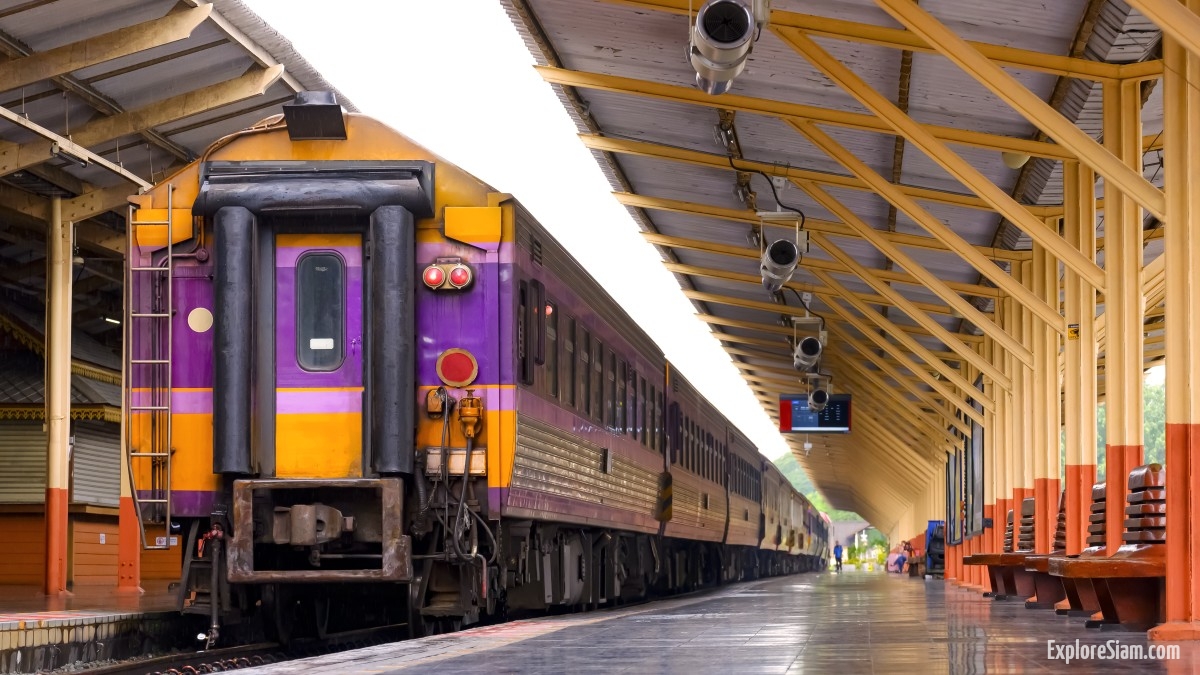Train travel in Thailand offers a unique and scenic way to explore the country, allowing travelers to experience its diverse landscapes and rich culture from a different perspective. This guide provides essential information for anyone planning to travel by train in Thailand, covering classes, ticket purchasing, baggage storage, and the importance of dressing appropriately due to powerful air conditioning.
Classes of Service
Thai trains offer several classes of service, each catering to different preferences and budgets. The three primary classes are:
First Class: First-class carriages provide the most luxurious and comfortable travel experience. Each compartment typically accommodates two passengers and features air conditioning, clean and private sleeping berths, and sometimes even private bathrooms. These compartments are perfect for those seeking privacy and comfort during their journey.
Second Class: Second-class carriages offer a good balance between comfort and cost. Passengers can choose between air-conditioned and non-air-conditioned options, as well as between sleeping berths and seated arrangements. The second-class sleeper berths are generally quite comfortable, with options for lower and upper bunks. The seats in second-class are also reasonably comfortable, making it a popular choice among budget-conscious travelers who still want a relatively comfortable ride.
Third Class: Third-class carriages are the most economical option, typically chosen by locals and budget travelers. These carriages usually have basic seating arrangements with fans instead of air conditioning. The seats are often bench-style, and the carriages can get quite crowded, especially on popular routes. However, third class offers a unique opportunity to interact with locals and experience the everyday life of Thai commuters.
Purchasing Tickets
Tickets for train travel in Thailand can be purchased in several ways, ensuring convenience for both locals and tourists.
At the Station: Tickets can be bought directly at train stations across the country. Major stations, such as Bangkok’s Hua Lamphong, have dedicated ticket counters for different classes and destinations. It’s advisable to arrive at the station well in advance, especially for long-distance journeys, to ensure ticket availability.
Online: For added convenience, tickets can also be purchased online through the official State Railway of Thailand (SRT) website or other authorized travel websites. Online booking allows travelers to reserve seats in advance and avoid the hassle of queuing at the station. This option is particularly useful for popular routes where tickets can sell out quickly.
Travel Agencies: Numerous travel agencies in Thailand can assist with train ticket bookings. They often charge a small service fee but can be a convenient option, especially for tourists who might need additional travel planning assistance.
Baggage Storage
Thai trains are equipped to handle passenger baggage, but the storage options vary depending on the class of travel.
First Class: First-class compartments usually have ample space for luggage storage. Travelers can store their bags in the compartment, either under the seats or on overhead racks. The private nature of these compartments ensures that luggage is secure throughout the journey.
Second Class: Second-class carriages also provide adequate storage space for luggage. For sleeper berths, there are designated areas to store bags under the lower bunk or on overhead racks. For seated arrangements, overhead racks are available, though space can be limited during peak travel times.
Third Class: Baggage storage in third-class carriages is more limited. Passengers can place their bags on overhead racks or keep them close to their seats. It’s advisable to travel light if opting for third class, as the carriages can become crowded, making it challenging to manage large or multiple pieces of luggage.
Air Conditioning and Dressing Appropriately
One of the notable features of Thai trains, especially in first and second-class air-conditioned carriages, is the powerful air conditioning. While this is a welcome relief from the often hot and humid Thai weather, it can become quite cold inside the carriages. Travelers are advised to dress in layers and bring additional clothing such as sweaters or blankets to stay warm during the journey. This is particularly important for overnight trips, where the temperature can drop significantly inside the train.
In contrast, third-class carriages and some second-class options without air conditioning can become quite warm, especially during the day. Light, breathable clothing is recommended for these carriages, and passengers should be prepared for varying temperatures.
Train travel in Thailand offers a blend of convenience, affordability, and scenic beauty, making it a popular choice for both locals and tourists. Understanding the different classes of service, knowing where and how to purchase tickets, being aware of baggage storage options, and dressing appropriately for the powerful air conditioning will ensure a comfortable and enjoyable journey. Whether traveling through the bustling cities or the tranquil countryside, Thailand’s rail network provides a memorable and immersive travel experience.





